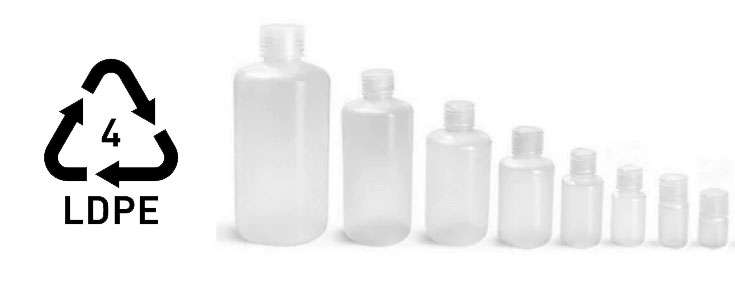Low density polyethylene or abbreviated as LDPE is one of the flexible, odorless, transparent and fully recyclable polymers. (This polymer is 100% recycled)
This polymer is widely used in products such as food bags, juice containers, and sticky coatings.
The features that distinguish this polymer include: flexibility, resistance to all types of corrosion, low-cost production process. High efficiency has made this product an attractive choice for engineering applications.
What is polyethylene?
If we want to give a precise definition of polyethylene, it is a polymer derived from petroleum, which is made of long chains of ethylene called monomer. Its chemical formula is (C2H4)n, although the properties of the resulting materials will be different depending on the manufacturing methods.
In the family of polyethylene’s, the unique properties of LDPE are due to its characteristic or branched structure.
These branches give it a specific shape and flexibility due to less crystallinity. These features make it different from other types of linear polyethylene (HDPE). The branching is shown in the image below:
How is low density polyethylene made?
This polyethylene is made through a process called free radical polymerization. To form this polyethylene, heat of 420 to 570 degrees Kelvin and high pressure of 300 to 1000 atmospheres are needed. To create such conditions, an autoclave or a tube in large batches is needed.
In the first step, raw materials are collected from oil by breaking down hydrocarbons. Then they separate ethylene gas from the mixture. After separation, this gas is baked into the reactor.
Next to oxygen or organic peroxide, it starts polymerization. Then polyethylene slurry is formed and extruded as granules.
After extruding, the granules can be used in two ways:
Through packing and processing
These two ways can be used to produce a large volume of low density polyethylene products through: injection molding, blow molding, thermoforming, vacuum casting, extrusion film making.
Properties of LDPE
In the table below, we have given you all the properties of this polyethylene:
As we mentioned before, the characteristics of this polyethylene are high flexibility at low temperatures and resistance to corrosion. This polyethylene has a high strength-to-density ratio, making it ideal for use in small, lightweight containers such as plastic bags.
What is the application of low density polyethylene (LDPE)?
Its use in food safety bags, waterproof packaging, attractive packaging
In fact, this has made it a good choice for use in a wide range of products due to its low cost and recyclability. (recycling ldpe)
Below are some of them:
Juice containers
Sticky packaging bags
trays
Six-pack rings for soda cans
Ice cream lid
Extrusion molding
Laminates
What are the advantages of low density polyethylene?
Flexibility
Crystallization with low resistance to moisture
Low permeability
Impact resistant
Affordable
Recyclable
What are the disadvantages of low density polyethylene?
Sensitivity to crack
Low strength, stiffness and maximum service temperature
High gas permeability, especially with carbon dioxide gas
Poor resistance to ultraviolet rays
Highly flammable
Does low density polyethylene (LDPE) have an effect on health?
This type of polyethylene is safe to use because it is non-toxic and does not cause cancer.
This polyethylene is considered safe and non-hazardous if it is swallowed in a small amount, inhaled, or if there is contact with it.
Low density polyethylene can absorb harmful chemicals from the environment, making it unsafe to use.
The use of these chemicals may result in them penetrating into food or the environment and contaminating the final product.
Is low density polyethylene toxic?
As we said, this type of polyethylene is non-toxic. The fact that plastic is used in food bags, bread bags, and juice containers shows that it is safe and does not contain any poisonous substances.
When recycling low density polyethylene, be aware that it may not be as pure as virgin material and may have different properties.
However, polyethylene can leach into the environment or food, which is why the FDA only allows food grade plastics that are virgin.
What are the differences between (LDPE) and (HDPE)?
These two types of polyethylene are different in the linear arrangement in the polymer chain. This is the reason why it gives more hardness, strength, crystallinity and less permeability than LDPE.
This feature of less crystallinity allows HDPE polyethylene molecules to be closer together. Another positive feature of HDPE is its lower permeability, which makes HDPE more chemically resistant.
It is also given a high thermal resistance that can work up to 100 degrees. (high density polyethylene HDPE ) is a great choice for products that need to be resistant to chemicals and rigid.
Because their thermal, chemical and mechanical properties are very different, their applications are also different.
You must consider the operating conditions of the product when choosing the right plastic for the desired application, and make sure that the plastic is optimal to meet the chemical-mechanical requirements.
Summary :
In this article, we have tried to briefly mention some properties, uses, advantages, and disadvantages of low density polyethylene.



